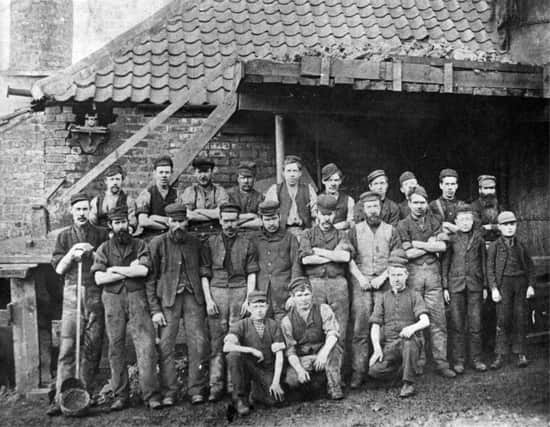Ian Scott: Falkirk made iron, and iron made Falkirk...


However, in the case of today’s topic, I am prepared to make an exception: ‘‘Falkirk made iron, and iron made Falkirk’’ sums up perfectly the story of the district in the 19th and 20th centuries.
For people of my generation the evidence was all around us – hundreds of men and women trooping into dozens of foundries and smoke stacks filling the skies with the by-products of the trade which provided hard but secure employment for thousands.
For the younger generation it is not so easy.
Advertisement
Hide AdAdvertisement
Hide AdBy the 1990s most of this had vanished and memories of sand-filled moulding shops were fading fast.
Fortunately over the years the district has accumulated a huge collection of the products which carried the Falkirk name to every corner of the globe and this week a new exhibition opened in Callendar House with an amazing number of items from all over the district.
Curator Niamh Conlon has put together a brilliant display of ironware which will surprise many by its range and quality.
The size and location of the second floor gallery makes it impossible to display the large items for which Falkirk is rightly famous like stoves, ranges, baths and mantelpieces but the compensation is the sheer number of items on display many of which I had never seen before.
Advertisement
Hide AdAdvertisement
Hide AdThere are hundreds of artefacts covering all aspects of the local iron industry from the intricate tools used by patternmakers and moulders to carved wooden patterns, decorative cast iron plates and panels and delightful models which were probably used for marketing purposes or possibly apprentice pieces.
In addition, there are a dozen information panels with great photographs of the foundries and the men and women at work.
It all started, of course, with the arrival of Carron Iron Works in 1759 but, as Brian Watters reminded us at the official opening last Saturday, the company made more than cast iron.
It produced a succession of men who learned not only the skills of patternmaking and moulding but how to source raw materials, find and train skilled workers, locate markets and service them at a profit.
Advertisement
Hide AdAdvertisement
Hide AdIt was these iron entrepreneurs who set the whole Falkirk district on course for fame and fortune: Men like Robert W Crosthwaite, George Ure, Robert Dobbie, William T Mitchell and Malcolm Cockburn – all with Carron connections aided by a world gone cast iron mad and there was little need for specialisation.
Not until the 1930s when demand began to decline did mergers bring about the concentration of products in particular locations.
Fifty years or so after Carron came Falkirk Iron Works on the canal at Bainsford followed a few decades later by the real explosion near Lock 16 in Camelon. Then it was Grahamston and Bainsford, Larbert, Bonnybridge and Denny before a second Camelon wave along the railway west from Stirling Road. And so it continued.
The exhibition entitled ‘‘Fe: Iron the Falkirk Story’’ runs until the end of May and I would urge anyone with an interest in Falkirk’s history to get along to Callendar House. It is the best exhibition of our iron heritage I have see for decades and every child in the district should see it.
Advertisement
Hide AdAdvertisement
Hide AdIt is a reminder, if one was needed, that we are missing a trick by not having a permanent iron founding museum here.
In these cash-strapped days it is not easy to find the finance but it would surely pay dividends in the long run.